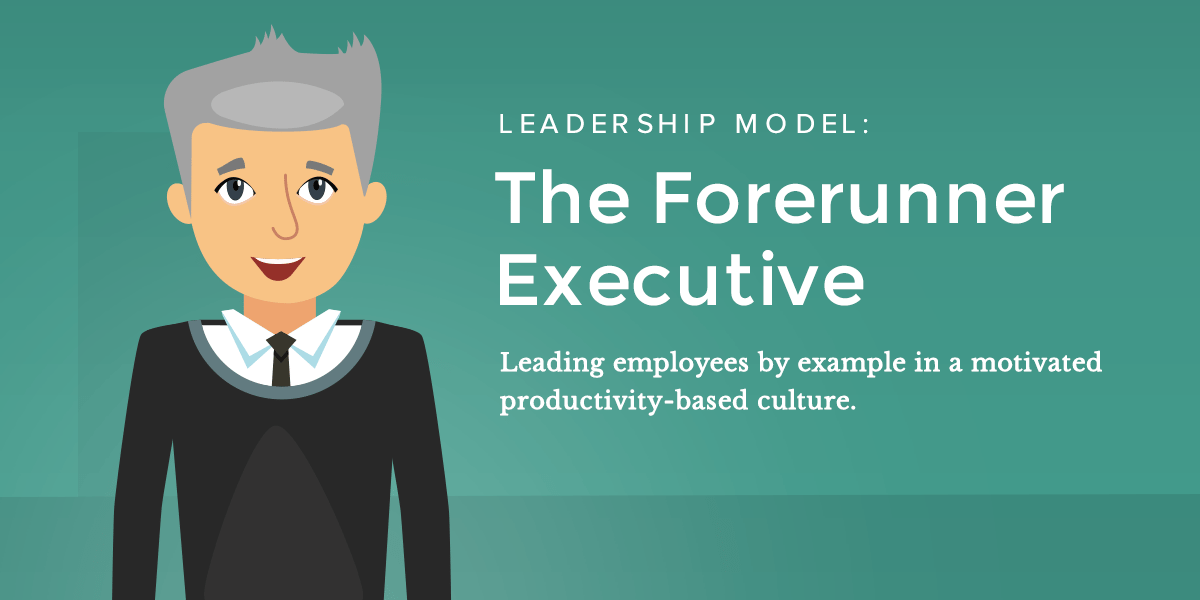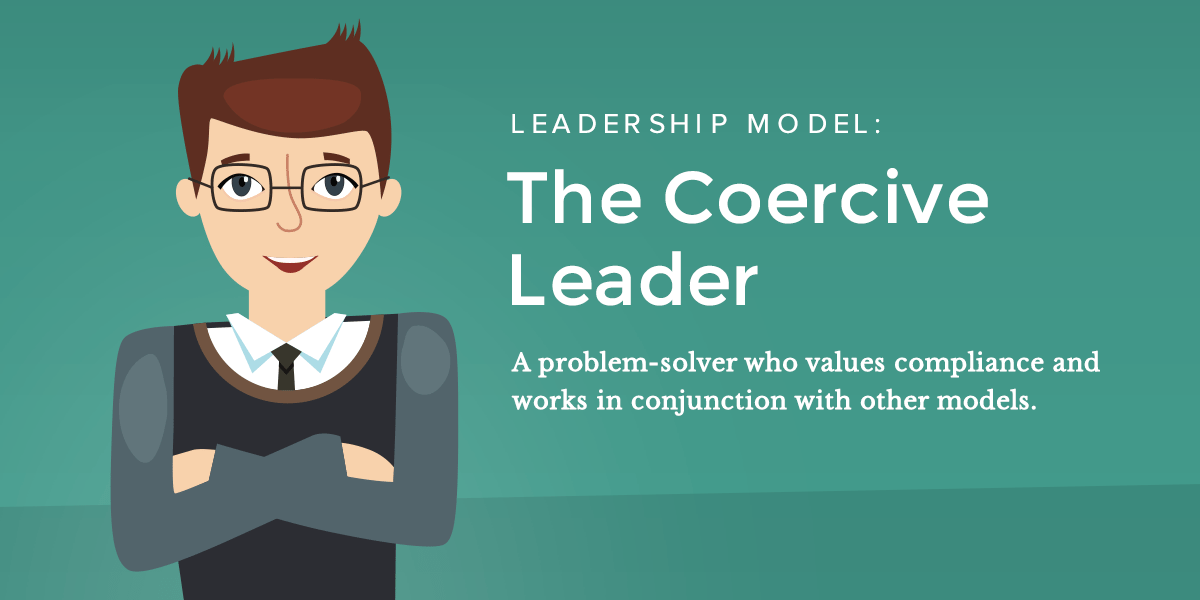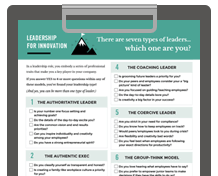When it comes to aligning with any of the new types of leadership models, it pays to get creative and break the mold.
Why is this the case?
The fact is, the corporate structure has long been a fairly uniform thing.
Historically speaking, executives were perceived as straight-laced individuals. They wore immaculately pressed suits and carried subdued reactions. In turn, they were viewed as the quintessential professional.
Think of classic films or TV shows like Mad Men. In past eras, executives always said the right thing and were not easily ruffled.

Source: Collider
It’s a different story now.
Today, the perception about executive leadership is changing as corporate structure evolves—and innovative thinking dominates.
These changing views have ushered in different styles of leadership models.
Companies, and their employees especially, are looking at new leadership individuals who do things a little differently.
Leadership in Business Organizations
Before we examine some innovative types of leadership models, let’s define how leadership influences the workplace.
What leadership means in itself is subjective. While your personal definition of “leader” may vary, odds are it includes many of these traits:
- Strong ability to inspire greatness in others
- A keen interest in bettering the workplace environment
- Confident and cool-headed in the face of adversity
- Maintains a positive attitude and leads by example
- Focused on solutions instead of problems
- Highly productive/not one to waste time
- Honest and loyal in their pursuit for company success
- A goal-setter and achiever
- Expert listener who is able to distill important information
Great leaders possess these traits in spades and apply them to their work environments.
A leader supports their employees as they strive for greatness by setting achievable goals and providing tools for success.
As outlined in Business News Daily, “Leadership styles and methods will vary because they are influenced by multiple factors…Challenges all business leaders face today…coupled with predicaments specific to their company, company size and the industry.”

Here’s a couple interesting stats:
Only 20% of organizations encourage and reward creativity and new ideas.
Yet, 78% of future business leaders believe innovation is necessary for business growth.
Things that make you go “hmm”….
In this article, we aim to focus on the kinds of leaders that thrive on innovation.
Notice how you can employ different types of leadership models together, or unanimously.
The goal is the same—success. How that success is reached factors on key choices regarding employee structure and main operation of the business.
So, what type of leader are you?
Let’s find out if you align with any of the following styles of leadership models!
The Different Types of Leadership Models
There are a wide variety of leadership models for business application. Some leaders are able to overlap styles and adapt them to best fit their company.

1. The Authoritative Leader
The Authoritative Leader focuses on setting and achieving goals.
The nitty-gritty details appeal to this leader who seamlessly builds a team of employees that can execute quality work.
With a focus on common vision and end results, this leader can still inspire individuality and creativity among employees. This is accomplished by providing a clear path to success.
The authoritative leader can give direction, then step back and watch success take shape as employees put their own spin on producing their work.
The Authoritative Leader has a strong entrepreneurial spirit and inspires an eagerness for success among employees.
SEE ALSO: 7 Reasons Why Creativity is Important to Decision Making
Consider how an authoritative model works:
- Executives are true experts in their field, molding their employees into high-performers
- Employees have strong mentors and feel confident in their growing abilities.
- Confidence and faith in leadership are constant.
- A success-culture is created in the office.
[clickToTweet tweet=”An Authoritative Leader is focused on setting & achieving goals with #entrepreneur spirit. #ceo” quote=”The Authoritative Leader is a type focused on setting and achieving goals with an entrepreneur spirit.”]

2. The Authentic Exec
The Authentic Exec is transparent and honest, responding in the moment and unleashing their actual emotions regardless of how they fear they’ll be viewed.
Here’s the deal:
They’re angry when stock numbers dip.
They cry when their assistant’s dog dies.
And, they aren’t afraid to stand on desks and go all Robin Williams in Dead Poets Society to inspire their employees.
Too emotional, and you may seem weak and unreliable in the business world.
Of all the types of leadership models, the Authentic Exec approach requires balance.
However, staying too stoic means you won’t connect with employees and build the rapport that authenticity otherwise promises.
It’s all about that balance.
Here’s how an authenticity model works:
- Executives are more accessible and relatable to their employees.
- Employees on all levels feel comfortable sharing new ideas.
- Passion for company success is welcomed and promoted among all employees.
- A family-like culture exists in the office.
[clickToTweet tweet=”Of all the types of #leadership models, the Authentic Exec approach requires balance. #ceo” quote=”Of all the types of leadership models, the Authentic Exec approach requires balance.”]

3. The Forerunner Executive
A Forerunner Executive truly leads by example. They set the pace in regards to productivity and everything else falls into place.
This type of model works seamlessly in companies with highly-skilled teams. Because employees have the necessary training to execute, a Forerunner sets the bar high.
Motivated employees thrive under a forerunner leader because they inspire greatness.
This type of leadership is based on a “Do as I do” philosophy, ensuring employees have an example by which to work.
The downside of this leadership model is the lack of innovation. Employees are expected to emulate efforts of the leader.
Take a look at how an authoritative model works:
- Executives lead by example, ensuring employees always know what’s expected of them.
- There is a low margin for error and a high level of productivity.
- Trust is easily built between leaders and employees who rely on their guidance.
- A productivity-based culture exists in the office.
[clickToTweet tweet=”Motivated employees thrive under Forerunner #Leadership because they inspire greatness. #ceo” quote=”Motivated employees thrive under forerunner leadership because they inspire greatness.”]

4. The Coaching Leader
A coach is just what you think; this leader develops people for the future.
With a focus on grooming, executives who coach their employees help them learn through exploration.
Coaching leaders find the greatest success in creative companies where employees can thrive under the right guidance.
The ongoing greater success of the company is the focus of a Coaching Leader. This executive helps their employees build professional strengths that in turn help the company.
As it relates to types of leadership models, Coaching Leaders are often highly effective “big picture” people.
Details and day-to-day specifics are not something the Coaching executive thinks about often. The goal is the end result, and building employee confidence works towards that end result.
Now, keep in mind:
This style works especially well when employees are willing to learn and grow. Coaching executives could struggle with employees set in their ways.
Here’s how a Coaching model works:
- Executives lift employees up by providing them tools for success.
- There is a constant flow of learning and doing, trying and growing.
- Appreciation and respect are traits all employees share for one another.
- A creative culture exists in the office.
[clickToTweet tweet=”With a focus on grooming, Coaching Leaders help their employees learn through exploration. #ceo” quote=”With a focus on grooming, Coaching leaders help their employees learn through exploration.”]

5. The Coercive Leader
Somewhat similar to the Authoritative Leader, the Coercive Leader gives concise direction to their employees.
This type of leader is focused on compliance and productivity over everything else. There is no flexibility, employees yield to this executive who dictates plans and processes.
A natural problem solver, the Coercive Leader knows how to keep employees in line and extinguish dilemmas as they arise.
By demanding compliance, this leader lacks the ability to bring out their employees’ innovative, critical thinking abilities.
Here’s the kicker:
This style often alienates employees.
It is unlikely that a corporate structure would thrive if it ran exclusively with a Coercive Leader Model.
However, the coercive leader is crucial in times of crisis.
A Coercive Leader works well in a corporate structure only as support within one or more other models.
[clickToTweet tweet=”A Coercive Leader keeps employees in line and extinguishes dilemmas as they arise. #ceo” quote=”A Coercive Leader keeps employees in line and extinguishes dilemmas as they arise.”]

6. The Group-Think Model
One of the more progressive new types of leadership models is the Group-Think. This type flips the traditional corporate hierarchy around.
Employees are empowered to make decisions. In turn, the executive staff takes their cues from what the employees indicate is needed.
There are clear advantages to this type of structure in companies where:
- The executives are not involved in everyday operations and sales,
- Customer service employees have the most timely information on client relations,
- …or lower-level staff works with customers who can affect the brand’s bottom line.
You can imagine how this could work in a company whose success relies on its expert sales staff for example.
When it comes to the Group-Think Model, there are also dangers if not managed correctly.
Think about it:
Employees can not completely disregard rules and regulations or there would be complete mayhem.
Because of this, executives have to maintain leadership qualities and the ability to give the final word.
Policy and processes are of utmost importance here.
The lines of communication have to stay open, too. No matter how empowered employees are; the people who sign the paychecks and take on the real risk.
Executives can’t be cut out of negotiations or remain unaware of day-to-day problems that significantly affect operations.
Executives who employ the Group-Think Model have cultivated a team of highly-productive experts in their respective fields.
Check out how a Group-Think Model works:
- Executives take cues from the employees to ensure the workplace functions properly.
- The employees have a lot of responsibility and do not take their jobs lightly.
- Communication is key; executives and employees have strong listening skills.
- A shared-success culture exists in the office.
LEARN MORE: 11 Key Business Performance Metrics for Better Operations
[clickToTweet tweet=”Employees are empowered to make decisions under the Group-Think #leadership model. #ceo” quote=”Employees are empowered to make decisions under the Group-Think leadership model.”]

7. The Democratic Leader
Perhaps the most beloved leader is the Democratic Leader. This style is a blend of Authentic, Authoritative and Group-Think leaders all in one.
Focused on feedback, the Democratic leader promotes participation as a means to drive company unity.
Democratic leaders thrive on feedback from employees and other executives. They are experts at breeding consensus among teams through communication and inspiration.
By asking employees for their opinions, ideas and constructive criticisms, the Democratic Leader continually molds their team toward success. This leader enables the team to set goals and create processes based on need.
The Democratic Leader can sometimes lean too hard on their employees. Their success could falter if teams are not skilled enough to provide valuable feedback.
Democratic Leaders are not the first choice in times of crisis. They focus on making decisions as a team. This kind of decision-making does not translate well in high-pressure situations.
Consider how a Democratic Leadership Model works:
- Executives promote constant communication with employees.
- There is a high level of employee buy-in and faith in leadership.
- Loyalty is high among employees who believe their executives truly need them
- A trust-based culture exists in the office.
[clickToTweet tweet=”The Democratic leader promotes participation as a means to drive company unity.#ceo #entrepreneur” quote=”The Democratic Leader promotes participation as a means to drive company unity.”]
Conclusion
Changing world views have promoted a variety of new, different styles of leadership models in the business world.
You can typically find these seven leadership styles in companies led by innovative thinkers.
Modeling your leadership after one (or two) specific types can breed a specific company culture for your organization.
- The Authoritative Leader
- The Authentic Executive
- The Forerunner Executive
- The Coaching Leader
- The Coercive Leader
- The Group-Think Model
- The Democratic Leader
With a clear view of your company’s goals, your employee’s capabilities and your desired workplace culture will help you define the type(s) of leadership models to subscribe to.
What types of leadership models seem the most aligned with your style?
Share with us in the comments, or take our quiz below to find out!
If you liked this article, please share! For more business optimization articles, click here.





